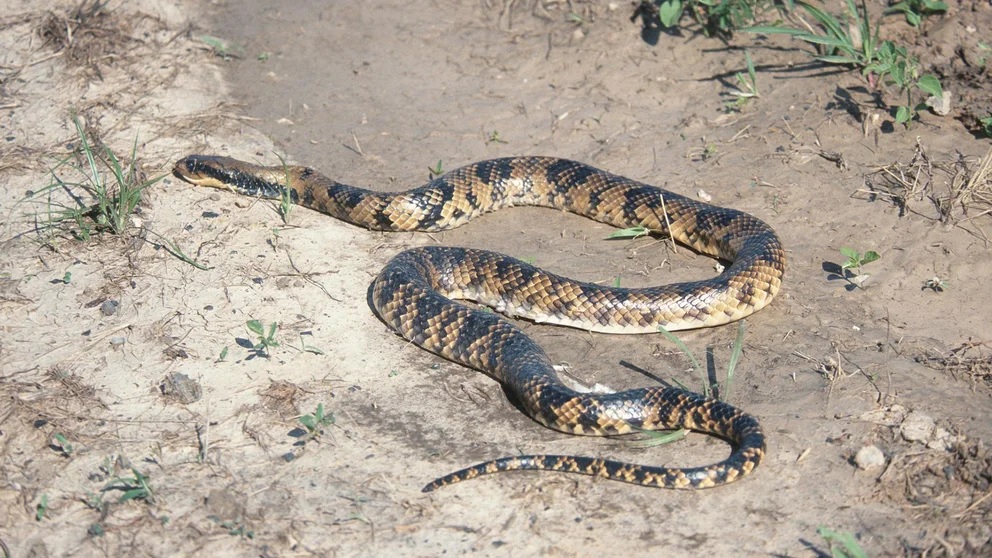Uruguay registered the presence of a specimen of Hydrodynastes gigas – better known as the “false water cobra” or the “Brazilian smooth snake” – in the national territory, according to El País.
It is one of the largest aquatic snakes in the region, which can reach a length of three meters.
The reptile was found in the department of Artigas in the country’s north and is the second specimen seen in Uruguay. The first was recorded in 1959.

Hydrodynastes gigas means “queen of the water.” As its name implies, this snake does not go unnoticed: its color, which varies from yellowish brown to light brown – with irregular dark spots – added to the three meters in length it can reach, make it a remarkable species and a dangerous one. However, it is not venomous.
“It is an aggressive animal. Its bite is strong and causes injuries,” Santiago Carreira, a researcher at the Laboratory of Systematics and Natural History of Vertebrates of the Institute of Ecology and Environmental Sciences of the Faculty of Sciences and the Herpetology Section of the National Museum of National History (MNHN), told El País.
Uruguay has four venomous species of snakes: the Crucera, the Yarará, the Rattlesnake, and the Coral.
This finding allows us to suppose that it is distributed along the Uruguay River and its surroundings, although it is impossible to verify to what extent. It is a species distributed throughout the continent: in Argentina, for example, it mainly inhabits the wetlands of Santa Fe.
But it is not the only case of these characteristics: something similar happens with the yellow anaconda (Eunectes notaeus). Two specimens were found during the last decades in Uruguay, although this does not provide evidence to ensure that the species breeds in the country.
Carreira mentioned that these appearances “are not necessarily associated with climate change events”.
“Now there is much more information (people with cell phones taking photos of the specimens and sharing them on social networks) and, in addition, these animals are aquatic and can move long distances, but it is striking that they are large animals because they are more visible.”
Uruguay has 48 native species of amphibians and 70 reptiles, 25% and 13% of which, respectively, are in danger of extinction. Of the 70 reptiles, one species is “critically endangered”, two are “endangered,” and five are “vulnerable”.
With information from Infobae

